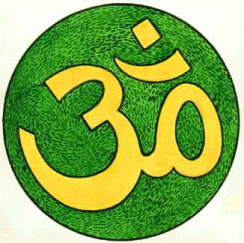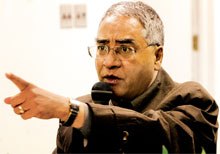 The month-long aftermath of King Gyanendra’s capitulation to mass protests and reinstatement of the House of Representatives has spawned a vast array of speculation over the circumstances leading up to the event.
The month-long aftermath of King Gyanendra’s capitulation to mass protests and reinstatement of the House of Representatives has spawned a vast array of speculation over the circumstances leading up to the event.The Seven Party Alliance (SPA) continues to insist that it drove the popular surge for democracy with the moral support from much of the world. The Maoists, rebuffing the SPA’s claim to exclusivity, maintain they had a preponderant role in the demonstrations. Even in their battered state, members of the royal government appear to stand by their contention that the “democracy movement” was neither: The Maoists, using the SPA cover, were close to capturing Kathmandu and establishing their much-cherished totalitarian communist state. Part of this contention was asserted by U.S. Ambassador James F. Moriarty in an interview with CNN during the height of the street protests.
Another version has it that King Gyanendra relented after Nepali Congress President Girija Prasad Koirala – the supreme commander of the movement and current prime minister – and Unified Marxist Leninist general secretary Madhav Kumar Nepal personally assured the monarch of their ability to retain a ceremonial monarchy as well as rope in the Maoists in a broad national framework.
Could the drama of the UML leader being returned to the Armed Police Force’s barracks in Kakani halfway through his transfer to the Supreme Court in Kathmandu have been merely a smokescreen for his and Koirala’s meeting with King Gyanendra?
A little noticed report on the People’s News website suggests that the reinstatement of the legislature was intended to forestall a greater spiral of death and destruction. Under the headline “India prepared to invade Nepal in April,” senior journalist Bhola B. Rana writes that India had kept five fighter helicopters on high alert at a military camp in Dehra Dun along with a special military contingent.
Quoting a delayed report from Janamanch, a Nepali weekly, Rana adds that the Indian Embassy had informed the then government an Indian Airlines aircraft was on standby to evacuate the personnel of the embassy.
What seemed to have precipitated the pace and content of the subsequent turn of events was China’s deployment of hundreds of thousands of soldiers along five points of the border. Moreover, according to the report, China put its Air Force in high alert in air bases in Tibet and Chinese satellites and radar were monitoring Nepalese airspace. In effect, the royal proclamation on April 24 owed its genesis to geopolitical pressures.
Considering the poor sourcing of the report and the delay in its dissemination, it would be tempting to dismiss it as a red herring. However, any student of contemporary Sino-Indian relations can easily view the report against the background of the cooperation and competition that has defined the Asian giants’ assertion of their regional and global roles. Moreover, it was King Gyanendra’s sustained moves toward reinforcing Nepal’s ties with China as a way of pulling the kingdom out of India’s menacing embrace that led New Delhi to forge the SPA-Maoist alliance against the palace.
The utter travesty the SPA has foisted on the country in the name of taming the palace, empowering parliament, democratizing the military and secularizing the state becomes all the more tragic.








 It must be a testimony to our twisted times that, in a matter of a fortnight, Nepalis have graduated from discussing a nebulous “total democracy” to deliberating on the threat of a “counterrevolution.”
It must be a testimony to our twisted times that, in a matter of a fortnight, Nepalis have graduated from discussing a nebulous “total democracy” to deliberating on the threat of a “counterrevolution.”
 The eKantipur.com headline screamed out on the screen: “Martyrs' families have no heart for monarchy.” After all the country has gone through, one would have thought such a sentiment was a given.
The eKantipur.com headline screamed out on the screen: “Martyrs' families have no heart for monarchy.” After all the country has gone through, one would have thought such a sentiment was a given.